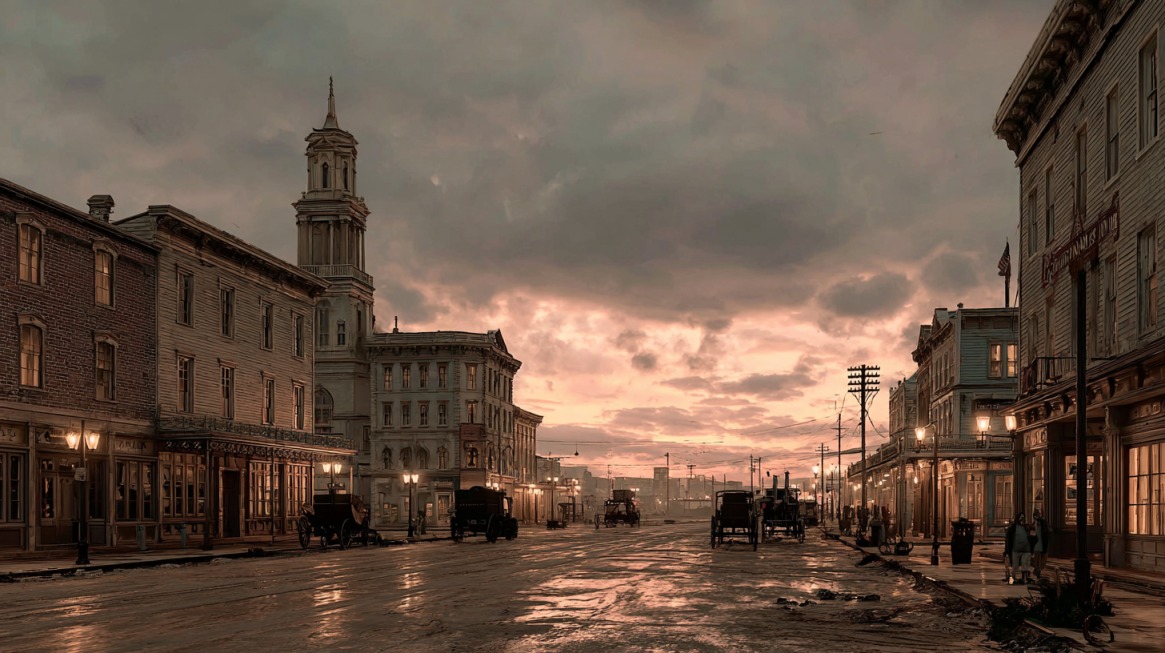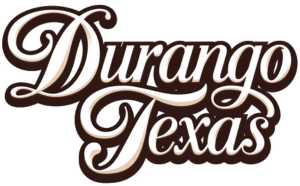Waco, Texas, often gets attention for its connection to controversial headlines and the home-renovation craze sparked by Fixer Upper. Yet there is far more to this Central Texas city than television fame and past events.
Travelers often arrive expecting only Magnolia Market or Baylor University, only to discover a range of unusual history, outdoor fun, and quirky experiences.
Hidden gems reveal a side of Waco that surprises both first-time visitors and longtime Texans alike.
1. Visit the Site of America’s First Legal Red-Light District

Few travelers realize that Waco was once home to one of the most unconventional social experiments in American history.
Known as The Reservation, the city became one of the only places in the United States where prostitution was openly legalized and regulated during the late 1800s.
Instead of pushing the practice underground, city leaders established rules designed to control and monitor it. Brothels were required to register, and the women who worked in them were listed in what became known as the Bawdy House Register, a remarkable log that remains a valuable historical artifact.
Walking the streets that once made up this district provides an unusual window into American culture during a time when morality laws were often strict.
Visitors can learn about how the system functioned, who participated, and why Waco allowed such activity when other cities outlawed it. The practice ended in 1917 after statewide reforms, but the story lives on through surviving records and accounts.
- Name of district: The Reservation
- Period of operation: Late 1800s until 1917
- System used: Bawdy House Register with official documentation of workers
- Reason for closure: State reforms brought the practice to an end
Why it’s surprising: Most visitors come expecting cowboy stories or pop culture references, not a bold chapter of legalized sex work that made Waco one of the most talked-about cities of its era.
2. Walk Across the First Bridge Over the Brazos River
@mitchelnbcmt Travel Update #9: Downtown Waco, Texas (Waco Suspension Bridge) #travelupdate #roadtrip #vacation #Texas #downtown #waco #suspensionbridge #chisholmtrail #StormChasing #Oklahoma ♬ original sound – mitchelryancoombs
Travel across Texas during the cattle-drive era was not easy, and crossing rivers often became dangerous or costly. Waco changed that in 1870 with the construction of the Waco Suspension Bridge, the very first bridge built over the Brazos River.
For the first time, herds of longhorn cattle, wagons, and stagecoaches could pass safely without relying on ferries. Today, it is strictly for pedestrians, offering a scenic and peaceful way to experience the river.
As you walk across, art installations and plaques tell the story of its importance to Waco’s development. Locals often gather here for festivals, live music, or simply to watch sunsets.
The bridge not only served its original purpose but has now become a symbol of community life.
- Year built: 1870
- Function: Originally for cattle drives and transportation
- Modern use: Pedestrian bridge with art and scenic overlooks
- Engineering note: Built by the same company later tied to work on the Brooklyn Bridge
Why it’s surprising: Most visitors do not expect to find a structure with ties to nationally significant engineering projects in a smaller Texas city.
3. Try Paddleboard Yoga on the Brazos River
View this post on Instagram
Few activities combine adventure, fitness, and tranquility like paddleboard yoga. Waco offers this experience through Pura Vida Paddle, a company that provides classes on the Brazos River.
Participants balance on paddleboards while instructors guide them through yoga poses, creating a workout that builds strength, balance, and focus.
Even beginners who have never stepped on a paddleboard can join, as the instructors keep things accessible and fun.
Floating on calm waters while stretching under the Texas sun feels almost tropical, offering a completely different perspective of the city.
- Location: Brazos River
- Provider: Pura Vida Paddle
- Experience offered: Stand-up paddleboarding combined with yoga instruction
- Atmosphere: Relaxed, fitness-oriented, with panoramic water views
Why it’s surprising: Central Texas may not be associated with water-based fitness, yet visitors find themselves enjoying an activity more often seen on coastlines.
4. Visit the Waco Mammoth National Monument
Not many people expect to find prehistoric giants tied to Central Texas, but Waco is home to one of the largest discoveries of Columbian mammoth fossils in North America. Over fifteen mammoths were found here, many believed to have died together in a natural event.
Recognizing the significance, the site was turned into a National Monument in 2015.
Visitors walk on raised paths overlooking the excavation site, giving a clear view of the fossils while protecting them. Rangers share the history of the discovery, the excavation process, and ongoing research.
Families especially enjoy the educational aspect, while science enthusiasts appreciate the rare chance to see such fossils in their original resting place.
- Number of mammoths found: Over fifteen
- Year of National Monument designation: 2015
- Features: Elevated walkways, educational tours, excavation site access
- Audience: Families, students, paleontology fans, general tourists
Why it’s surprising: Despite national recognition, many road-trippers pass through Waco without realizing they are minutes away from one of the country’s most fascinating fossil sites.
5. Sip Sodas at the Birthplace of Dr. Pepper
View this post on Instagram
Soft drink history traces its roots back to Waco, where Dr. Pepper was created in 1885. The Dr. Pepper Museum, located in the original bottling plant, celebrates that story with interactive exhibits.
Guests learn about the evolution of soda marketing, see vintage advertisements, and even step inside an old-fashioned bottling room.
One highlight is the soda fountain, where visitors can enjoy a hand-mixed Dr. Pepper served in glass bottles. For anyone with a sweet tooth, the museum gift shop offers soda-inspired candies and merchandise that can’t be found elsewhere.
- Year of invention: 1885
- Museum location: Original bottling plant in downtown Waco
- Exhibits include: Early bottling equipment, advertisements, vintage packaging
- Highlight: Classic soda fountain serving original-style Dr. Pepper
Why it’s surprising: Few people connect one of the world’s most iconic sodas with Waco, yet it all began here in a modest Texas plant.
6. See Bonnie & Clyde’s Shotguns at the Texas Ranger Museum
Crime history meets law enforcement inside the Texas Ranger Hall of Fame and Museum. Visitors discover artifacts tied to famous figures, including the shotguns seized from the infamous duo Bonnie and Clyde after their dramatic end.
These weapons give a direct connection to one of the most legendary outlaw stories in American history.
The museum goes far beyond just outlaw tales, however. Guests can learn about centuries of Texas Ranger history, browse antique firearms, and view exhibits that show how the Rangers evolved into modern law enforcement.
- Main artifact: Bonnie and Clyde’s shotguns
- Focus: History of Texas Rangers from 1823 onward
- Exhibits include: Firearms, uniforms, historical documents
- Visitors: Crime buffs, history lovers, pop culture fans
Why it’s surprising: A museum in Waco holds items linked to some of the most notorious criminals in America, alongside a complete history of legendary lawmen.
7. Attend a Movie + Dinner at the Hippodrome Theatre
View this post on Instagram
Entertainment in Waco takes a stylish turn at the Hippodrome Theatre, a historic venue originally built in 1914. Once a vaudeville and opera house, it has been fully restored into a modern entertainment hub.
Today, audiences can watch current movies, live performances, or special screenings while enjoying full table-side food and beverage service.
The setting creates an experience very different from a traditional multiplex. With vintage décor, cozy seating, and a menu that extends far beyond popcorn, the Hippodrome makes a night out memorable.
- Opened: 1914 as a vaudeville theatre
- Modern features: Full-service dining and bar during shows
- Programming: Movies, concerts, comedy shows, live events
- Ambience: Combination of historic design and modern amenities
Why it’s surprising: A city of Waco’s size offering dinner and entertainment in a century-old theatre adds character that visitors rarely anticipate.
8. Discover the Legacy of the Branch Davidians
Few events brought more attention to Waco than the 1993 standoff between federal agents and the Branch Davidians.
The tragic confrontation at the Mount Carmel site left a lasting mark on American history. Today, visitors can tour the grounds quietly on a self-guided basis, encountering memorials and exhibits that reflect the group’s complex past.
For those seeking more context, PBS and other archives provide digital resources with interviews, documents, and footage that explain the broader story.
Visiting the site encourages reflection and allows people to understand the human dimensions of an event that is often oversimplified.
- Site: Mount Carmel, east of Waco
- Experience: Self-guided tours, exhibits, memorials
- Supplementary resources: PBS digital archives for additional context
- Tone: Quiet, reflective, historical
Why it’s surprising: A visit here reveals a far more detailed and human story than the dramatic headlines most remember.
9. Shop Local at the Waco Downtown Farmer’s Market
View this post on Instagram
Every Saturday morning, Waco locals gather at the Downtown Farmer’s Market, creating a lively atmosphere filled with food, crafts, and music.
Farmers bring seasonal produce, artisans showcase handmade goods, and food trucks prepare everything from breakfast tacos to gourmet treats.
The market provides an authentic look at community life in Waco, far different from the Magnolia brand that dominates popular travel discussions. Meeting growers and makers gives visitors a chance to connect directly with the people shaping Waco’s identity today.
- Schedule: Every Saturday morning
- Vendors include: Farmers, artisans, food trucks
- Products: Produce, baked goods, handmade crafts, specialty foods
- Atmosphere: Relaxed, family-friendly, community-centered
Why it’s surprising: Many assume shopping in Waco begins and ends at Magnolia, but the farmer’s market proves the city’s creativity runs much wider.
10. Attend the Heart o’ Texas Rodeo
Each October, Waco transforms into a celebration of cowboy traditions with the Heart o’ Texas Fair & Rodeo. The event features bull riding, barrel racing, roping contests, and livestock shows, alongside a full carnival with rides, games, and plenty of food.
Live country music concerts add even more energy, drawing crowds of all ages.
Unlike massive rodeos in Dallas or Houston, Waco’s event feels community-centered while still delivering an authentic, large-scale rodeo experience.
Families can enjoy fairgrounds, thrill-seekers can test carnival rides, and rodeo fans can watch some of the best athletes in the sport.
- Timing: Every October
- Events include: Bull riding, barrel racing, roping, livestock shows
- Extras: Carnival rides, fair food, country concerts
- Audience: Families, rodeo enthusiasts, music fans
Why it’s surprising: A rodeo of this size and authenticity in a mid-sized Texas city rivals experiences often associated with far larger arenas.
Summary
Waco offers surprises at every turn, from prehistoric fossils to outlaw relics, paddleboard yoga to a soda fountain that launched a global brand.
Travelers find themselves drawn into stories of history, culture, and local flavor that go far beyond Magnolia’s spotlight.
Adventurers, history fans, and casual tourists alike will walk away realizing that Waco is far more than a one-note destination.

